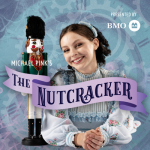2003-10 Vital Source Mag – October 2003
Slanted Soapboxes of Media
By Paul McLeary Healthy Debate or Disheartening Trend? For years, and some might say decades, conservatives had been up in arms about what they perceived as the media establishment’s liberal bias — and not completely without cause. But a funny thing happened in the early 1990s to change all that. Rush Limbaugh broke into the American consciousness through the snooze and clutter of AM talk radio, and with his ascension, station managers discovered an untapped reservoir of rage bubbling up in the country that needed to be marketed to. They quickly moved to flood the airwaves with fire-breathing right-wing evangelists. Pouncing on the bandwagon, FOX quickly moved in to cash in on the lack of a truly conservative presence in television news, much to the chagrin of the left. With this, the world of televised political punditry moved beyond what can now be seen as the gentler time of MacNeil/Lehrer and The Capital Gang, and jumped into the bare-knuckle street fight techniques practiced by attack dogs like Chris Matthews, Joe Scarborough, Bill O’Reilly, Sean Hannity and their ilk. In a much-publicized failure, lefty Phil Donahue threw his hat into the ring earlier this year to try and inject some left-wing thought into television punditry, but met with what at best can be described as a collective yawn, at worst a debacle of major proportions. More recently, liberals in general have started to wake up to their supposed lack of radio and prime time television spots, and this past year we saw wealthy Chicago couple Sheldon and Anita Drobny announce their plans to invest $10 million in a liberal radio network, and Al Gore try to raise funds for a liberal news channel. Forums for partisan sniping — oh my. With this, the American media effectively took one giant step through the looking glass. No longer considered objective purveyors of the truth, newspapers, radio programs, magazines, websites and blogs have become outlets for highly partisan sniping that purport to offer a claim to objective truth by bashing the other side’s every proposal as being something just short of complete insanity. Liberals and conservatives alike feed this machine with equal doses of venom, although both sides rather arrogantly hold themselves above the fray. American media seem to have entered a state of perpetual backlash, with the right railing against the “liberal media” and the left taking up arms against the media gains the far right has made. On the face of things, this looks to be great news for the concept of a truly deliberative democracy, where all parties have a voice in the great debates of the age. Unfortunately, while both sides are getting their airtime, more often than not they’re simply preaching to the choir. Take a trip to conservative blog Lucianne.com and you’ll find that the message board trolls don’t trust the AP, Reuters and UPI newswires because of their “liberal” slant. Likewise, there are a whole host of liberal blogs like “What Liberal Media” author Eric Alterman’s “Altercation” […]
Oct 1st, 2003 by Vital ArchivesWarren Zevon
By John Hughes WARREN ZEVON The Wind Artemis Records www.warrenzevon.com Before Warren Zevon died in early September, he assembled an all-star cast of friends to help him craft his own epitaph — a final CD recorded in the aftershock of his fatal diagnosis. A songwriter’s songwriter, he maintained great integrity throughout his career, no matter what the prevailing fashion. May he rest in peace. We are treated to much more than a parting novelty. In The Wind, Zevon takes us on a tour of American music. He sings like Woody Guthrie on the opening cut. From there he tours us through a Springsteen-esque rocker, hyper-charged by Bruce himself; and the Dylan classic “Knockin’ on Heaven’s Door” done with a touch of gospel. He gives us a blues romp and songs sung like Jackson Browne and Willie Nelson. “Prison Grove,” a standout effort that could have been pulled from the Lomax field recordings songbook, is highlighted by a chain-gang chorus of Springsteen, Browne, Jordan Zevon, Jorge Calderon, T Bone Burnett and Billy Bob Thornton. There are also two sensitive, lovely ballads, written and played straight, sung just like Warren Zevon. He deploys his friends — especially Ry Cooder, Emmylou Harris, Springsteen and Calderon — with maximum efficiency. It all adds up beautifully, for ten songs. But all this is just so much clearing of the throat as Zevon prepares us for song 11, the dramatic finale. In the final song of his life, Zevon blesses us with an extraordinary moment — a dying man bids adieu. He wrote the song for his two children, but sings it for everyone. He taps deep emotion without being maudlin. He stands tall in his deathbed. His last request? “Keep me in your heart for awhile.” Yes, Warren. Will do.
Oct 1st, 2003 by Vital ArchivesElvis Costello
By Jon M. Gilbertson ELVIS COSTELLO North Deutsche Grammophon www.elviscostello.com As he grows older and perhaps wiser, Elvis Costello increasingly resembles another former enfant terrible from the UK: writer Martin Amis. Both sons of notable practitioners of their respective arts, both more famous than their fathers, they are almost embarrassingly skillful and variegated: Amis the novelist, reviewer, journalist; Costello the explorer of New Wave, Tin Pan Alley, country & western, rhythm & blues. Costello’s latest album, North, finds him meditating in the gorgeously melancholy shadows once inhabited by Cole Porter, the Gershwins et al. He’s been there before, but never so deeply. His facility with the forms – particularly the alternately lush and spare arrangements, which include a horn nonet, the classically trained Brodsky Quartet, and Attractions keyboardist Steve Nieve — recalls the clarion blurb on Amis’ last paperback, 2002’s The War Against Cliché: Essays and Reviews 1971-2000: “Is there anything Martin Amis can’t write about?” Indeed. Is there any musical style Elvis Costello can’t master? More to the point, does a creative chameleon eventually forget or lose sight of what he’s best at? The most devoted Costello fan, asked to define the man’s essence, would reach for the early work, its electric guitars and tumbling wordplay. Yet North deserves better than polite applause. Even more than Painted From Memory, Costello’s much-lauded collaboration with Burt Bacharach, these 11 songs weep with the admission of a romanticism usually thwarted by irony or buried in anger. From the desperation of “You Left Me in the Dark” to the serenity of “I’m in the Mood Again,” North is about passionately careful artistry. It is about Elvis Costello’s cracked but strong baritone register. It is about grace in the teeth of love. Above all, North is about hopes: betrayed, dashed, renewed, fulfilled. The album represents the outpouring of a beating heart, not another notch in an artist’s impressive catalog.
Oct 1st, 2003 by Vital ArchivesNappy Roots
By John Hughes NAPPY ROOTS Wooden Leather Atlantic www.nappyroots.com Nappy Roots are the best musicians to come out of Kentucky since Joan Osborne, and a lot more fun. On this CD, like a champion racehorse at the Kentucky Derby, they burst out of the gate, grab an early lead, hold the pace despite some stumbles, and surge to a win. I am a 46-year-old white male, on whom the charm of hip-hop is often lost, and I can’t get enough of Nappy Roots. They have an infectious groove on 15 of these 18 songs; if you’re at all well they’ll get you on your feet, shaking it and clapping. The glorification of violence and misogyny so prevalent in much of rap is absent here. These gentlemen obviously have been listening to country blues, traditional soul gospel, Caribbean rhythms and Philadelphia soul, as well as hip-hop. But they are not at all derivative. They carry their forbearers in their hearts while living in the present, and create a vibe of joy and freedom. Nappy Roots are deeply proud of their rural background, and consequently remind me of the defunct, lamented, Arrested Development. But these ambassadors of the Bluegrass State are more lovable than Speech and Company, because Nappy Roots deploy funny vocal stylings, and avoid prophetic pretension. It’s just a rhythm party from start to finish, marred by a few bad songs, but ultimately ready for the Winner’s Circle. Yea, Kentucky!
Oct 1st, 2003 by Vital ArchivesMarj Hahne
By Russ Bickerstaff MARJ HAHNE notspeak When the instruments and singing voices are left out of audio, all that remains is the music of spoken ideas. In her poetry CD notspeak, Marj Hahne presents a gently flowing symphony of ideas almost completely devoid of music. What little music there is serves more as a segue to the next track than an accompaniment. The tracks add up to 39 minutes of audio, but there is far more here than a pleasant half hour. The CD contains 21 tracks that serve as doorways into a microcosm of familiar worlds that grow richer in depth with repeated listenings. Hahne’s childhood Barbies wore only go-go boots, and she describes them in the same tone and rhythms she uses when evoking a bug splattering on a windshield. One track honors New York with the words, “minus the twins.” It is one of the few points in the CD where Hahne’s cadence picks up a bit. She has a dreamy precision, hypnotic in its stark simplicity. Concrete pastel words form linguistic landscapes spoken in a voice lost somewhere near the horizon of its own distant rhythm. This is the kind of relaxing experience that can electrify when the last track ends, the dream lifts and the senses return. Interested in obtaining notspeak?Contact Marj Hahne at: marjhahne@earthlink.net.
Oct 1st, 2003 by Vital ArchivesJune Carter Cash
By Brian Barney JUNE CARTER CASH Wildwood Flower Dualtone Records The heartbreaking beauty of June Carter Cash’s last record, Wildwood Flower, defies description. The tracks flow in an autobiographical movement, where the purest of instrumentation provides the background for songs that tell the stories of a life based on tradition, and values that escape the trappings of politics and trend. The CD is an obvious final testament to her 2002 visit to her parents’ home in Virginia, where she sat on the back porch, singing family classics with husband Johnny, and her cousins, Janette and Joe Carter. What followed was a two day recording session producing 14 songs, eight of which are heard on Wildwood Flower. Opening track “Keep on the Sunny Side” sets the tone with rich, full bodied, piercingly bright 6-strings that provide accompaniment to her voice which, while somewhat quavering, resonates with as much strength and emotion as the version recorded by her late mother on the Nitty Gritty Dirt Band’s Will The Circle Be Unbroken. The enchantment continues throughout with gut-wrenchers like “Storms Are On The Ocean” with its’ string arrangements so achingly beautiful that…well…let’s just say, it could set a grown man to weepin’. There is also an air of fun and abandon in tracks like “Temptation,” and snippets of conversation between June and family spanning time from early Opry days to the current sessions. Standout tracks featuring flat top at its’ best can be found in “Alcatraz” and “Cannonball Blues,” while gospel meant for hand holding and praise is displayed in classics like “Anchored in Love.” The Carter/Cash coalition has long been considered by many to be the most important and influential contribution to Americana and country music ever, and proof of that is certainly found in this must-have record.
Oct 1st, 2003 by Vital ArchivesOh My God
By Brian Barney OH MY GOD Interrogations and Confessions Novo Records www.ohmygodmusic.com Since their reincarnation under their current moniker in 2000, Chicago’s art rock trio, Oh My God has been creating a national buzz, prompting kudos from the likes of VH1 and Rolling Stone Magazine without the support of a major label. Their third full-length release, Interrogations and Confessions, is another step upward in this highly original band’s climb to the top. No guitars needed here, as the keyboard genius of Iguana brings on a Leslie-driven tidal wave that drenches the listener with an erratic, quirky smoothness showing a flip side that has more muscle than any stack of Marshalls can muster. Lead singer/bass player (and Milwaukee native) Billy O’Neill fronts with a theatrical flare and a voice that has Sinatra’s smoothness with the edginess of Bono at his best. Newest addition, Bish, holds things together with a drumming style that leaves the novices awed and experts impressed. The disc is a bit of a departure, with a few tracks that seem to creep toward the fringes of the mainstream. Cuts like “Our Loves” and “Shine,” show radio friendliness, while the driving, almost ballad-like beauty of “February 14” (in this writer’s opinion, the record’s high point) has a flavor that could easily be described as national. For those of you who have come to love the band for its’ eclectic and “artsy” side, don’t despair; songs like “Tom” and “Rat Man’s Confession” along with the bicep flexing drive of “Volatile” and “Get Steady” will leave you with plenty to chew on. In a recent interview, Iguana talked about their struggles on the road. “We played 114 shows last year covering both coasts, and only had a hotel twice. Hard touring has caused us to look inward” he stated. The boys seem to have done just that, coming up with yet another body of work that is as unpredictable as it is accessible. There is no filler on this album. Like all their prior work, OMG’s latest is a work of art.
Oct 1st, 2003 by Vital ArchivesA Dance of Survival & Freedom
By Alexander Ragir In the 17th century, African slaves in Salvador (Brazil’s oldest city) were routinely shackled and beaten. But those slaves of 400 years ago were not as beaten down as they may have appeared to their Portuguese slave masters. Always coming up with ways to survive their oppressors, the slaves practiced combat moves under the guise of a dance, and taught one another how to fight. When you watch Capoeira dancers/athletes in action it’s easy to see how those 17th-century slaves from Angola outwitted their masters: the purpose is to avoid aggressive movements, instead relying on stealth. The martial art was outlawed until the 1930s in Brazil; now you see it everywhere in the city of Salvador. Salvador was the second most important city in the Portuguese empire after Lisbon, and the center of the sugar trade. The city is said to be the most “African” place outside of Africa. It is also one of the poorest places in Brazil. The old city of Salvador, Pelorinho (meaning “whipping post”), was formerly the home to Bahian aristocrats and its cultural elite. Descending from the baroque architecture — gold-filled churches and beautiful mansions at the top of the hillside — are steep, twisty cobblestone roads paved by the hands of slaves. Four centuries later my North American friend, Joey, and I drank in the same breathtaking view overlooking the plaza below. A man approached us, spreading arms colored with beaded necklaces in the shape of a berimbau, the principal instrument of Capoeira and proclaimed, “Amigo!” He went on to inform us that 10 necklaces for three reals (90 cents) is a good deal, because all the Bahian women love them. Today, Pelorinho is restored for tourists and packed with restaurants, bars, art galleries and boutiques. The architecture is wealthy 17th-century Portuguese, while the culture is more African or Jamaican than South American. The relationship between past and present in Pelorinho is striking; understanding it, elusive. Survival on the streets. The spirit of Salvador is belied by smiles and overfriendliness that lend a superficial air of gaiety, but its true theme is survival. Whether being befriended by a stranger, seduced by a woman or being invited to participate in a Capoeira performance, tourists will be asked for money afterward. Native Salvadoran culture was developed through a struggle to survive as slaves. Now, the spirit of survival embedded into that culture dips into the hearts and pockets of tourists. Begging in Salvador is endemic. If you do not completely ignore the beggars, you will be surrounded with palms-up. For many in Salvador, one American dollar is equivalent to one day’s work at minimum wage. We had arrived that morning from the red-eye, an 11-hour bus ride from Puerto Seguro, and were waiting on the front steps of what is now the Jorge Amado Museum. It was to reopen after the midday siesta. The humid heat made it hard to breathe. As we sat on the steps, the man with necklaces tried new […]
Oct 1st, 2003 by Vital Archives

















